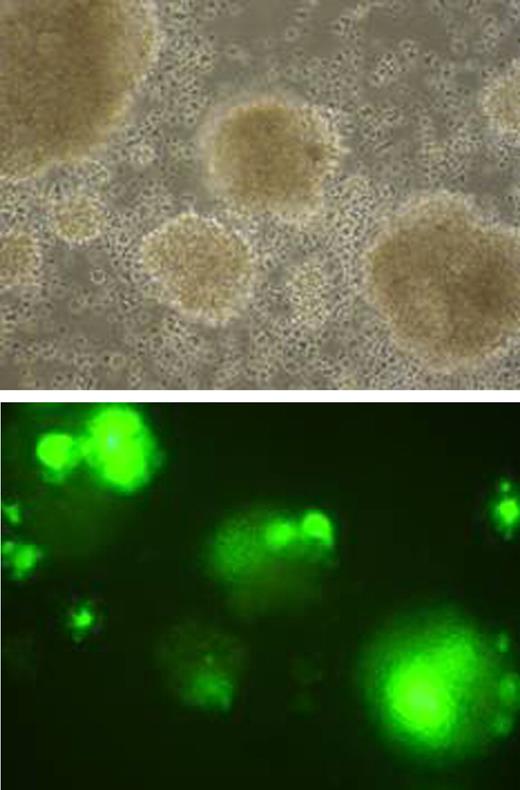Abstract
Abstract 2460
Poster Board II-437
Replicating viruses that selectively lyse transformed cells are promising agents for cancer therapy. Attenuated measles virus (MV) has particular tropism for B cells and is oncolytic in murine models of myeloma and lymphoma. These results have led to phase 1 studies in myeloma. Here we investigated the anti-tumour potential of MV in adult B lineage acute lymphoblastic leukaemia (ALL) and Chronic lymphocytic leukaemia (CLL). GFP expressing attenuated MV derived from the Edmonston vaccine lineage (MV-Edm) was used to infect ALL (n = 6) or chronic lymphocytic leukaemia (CLL, n = 7) primary specimens. All CLL and ALL cells expressed the MV receptor CD46. The second MV receptor SLAM was consistently expressed in all the CLL cells but only in 5/6 of the ALL cells. Both ALL and CLL cells were efficiently infected by MV-Edm as indicated by quantitation of viral nucleocapsid mRNA by RQ-PCR and immunoblotting of viral proteins N,H and F. Large multinucleated syncytia, characteristic of MV- induced cytopathology, were found in all infected ALL cultures (Figure 1), by contrast syncitium formation was less prominent in the infected CLL specimens. Despite this, both CLL and ALL cells were efficiently killed by MV-Edm, as characterised by FACS and trypan blue based assays as well as immunoblotting for PARP cleavage. Specificity of lysis for tumor cells was confrmed by infection of normal mononuclear cell controls, which showed minimal syncitium formation and death even after prolonged infection. To investigate the contribution of cell-to-cell fusion in the pathogenesis of MV-induced oncolysis we investigated a relatively non-fusogenic MV:MV-Moraten in our models. Surprisingly, both CLL and ALL cultures infected with MV-Moraten demonstrated a reduction in cell viability compared to uninfected controls despite the absence of typical features of MV cytopathology. Our data suggest that both ALL and CLL are targets for MV-mediated lysis and that cell-cell- fusion might not be an important determinant of this effect in-vitro. Ongoing in vivo studies of MV oncolysis in B-cell malignancy should further inform the therapeutic potential of vaccine MV for these neoplasms.
MV-Edm infection results in prominent syncytia formation in primary ALL cells (A and B).
MV-Edm infection results in prominent syncytia formation in primary ALL cells (A and B).
No relevant conflicts of interest to declare.
Author notes
Asterisk with author names denotes non-ASH members.


This feature is available to Subscribers Only
Sign In or Create an Account Close Modal